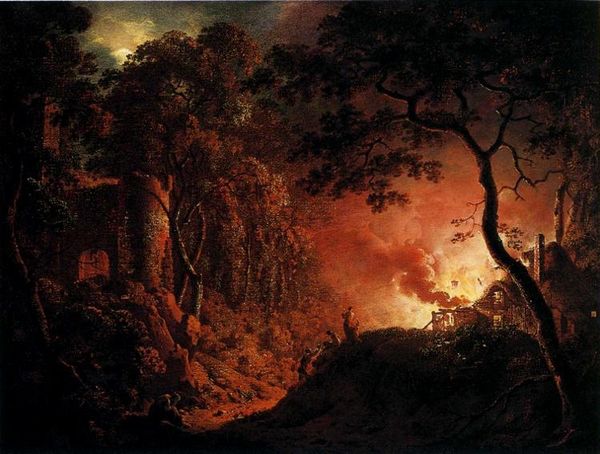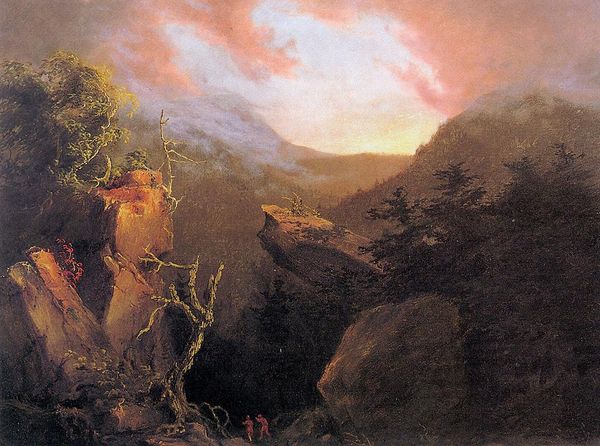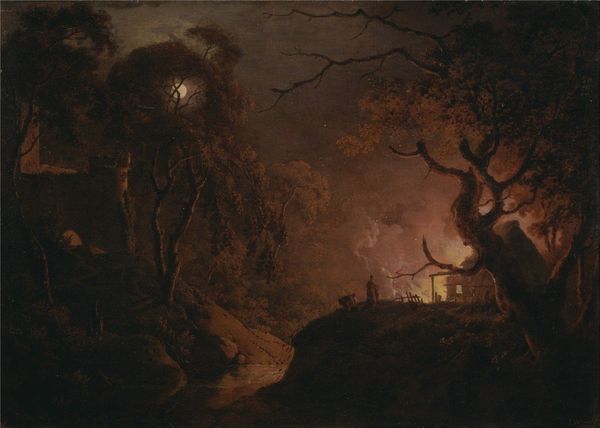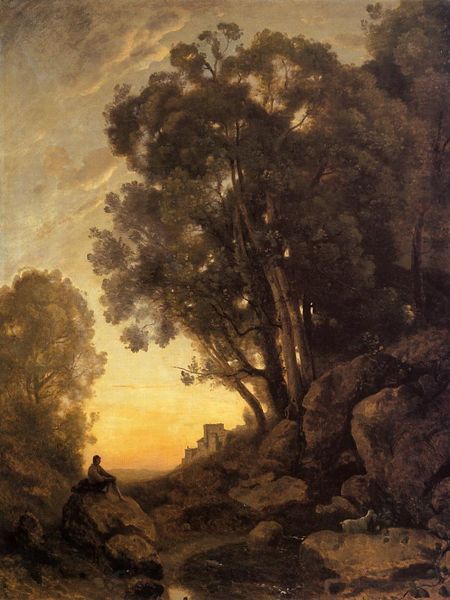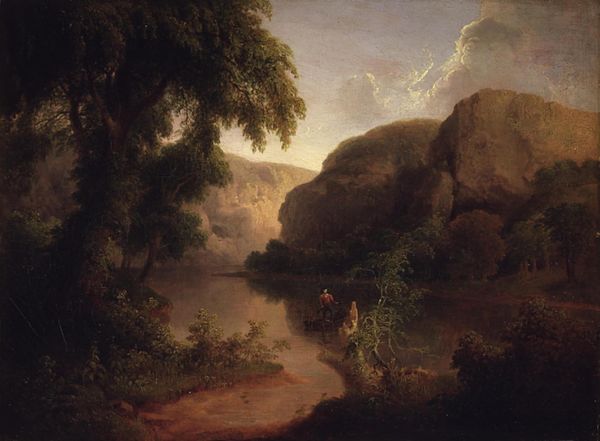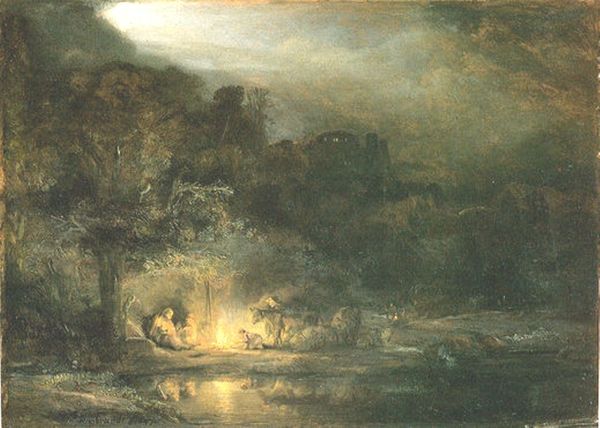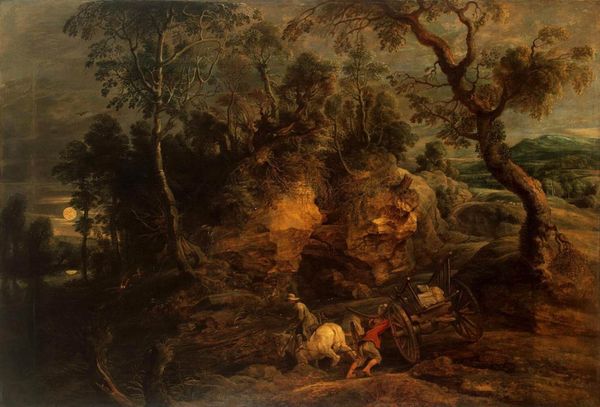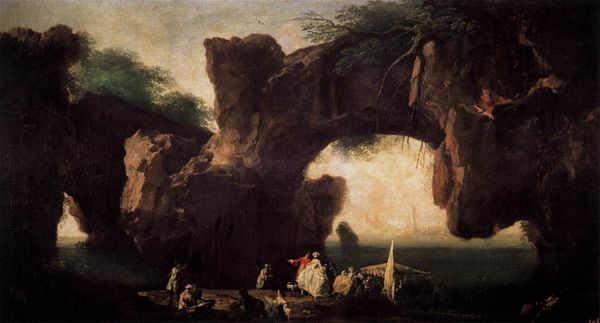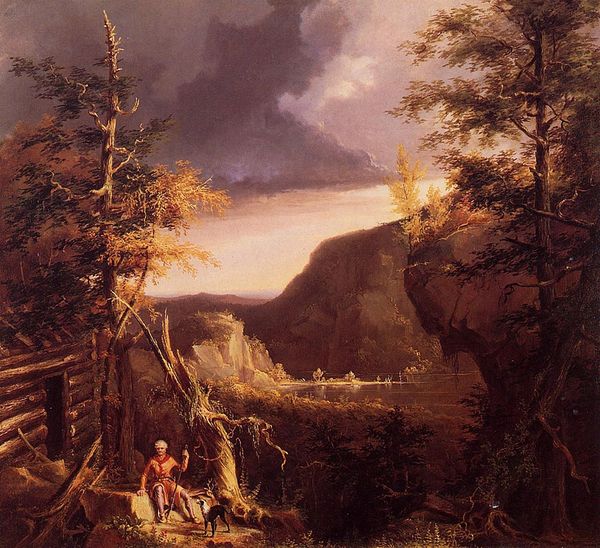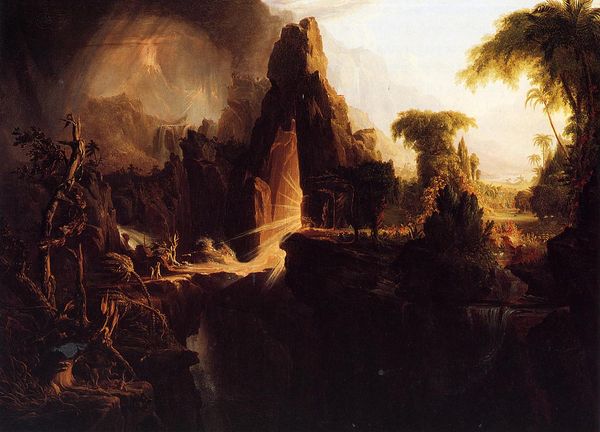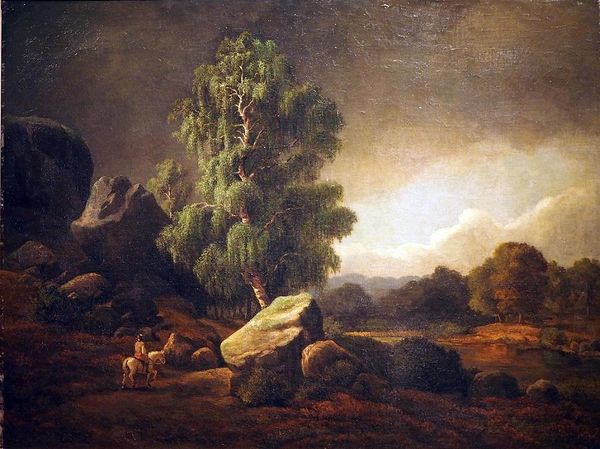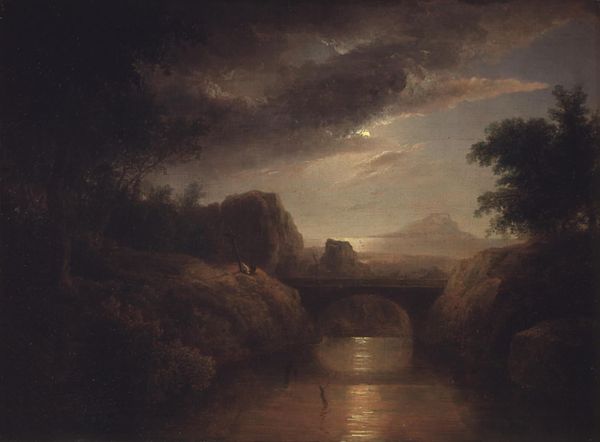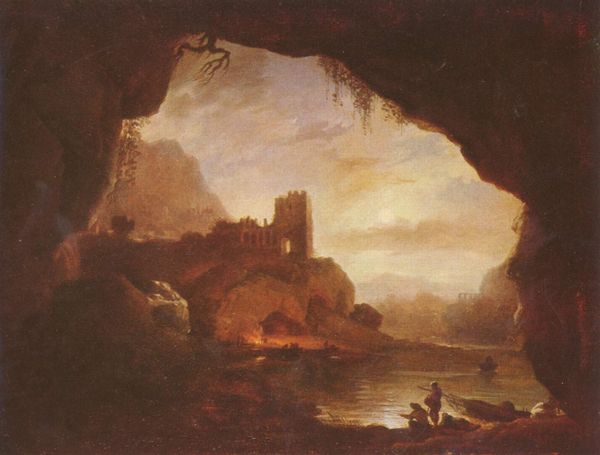
Dimensions: 127 x 101.6 cm
Copyright: Public domain
Editor: So, here we have Joseph Wright of Derby's "Virgil's Tomb, with the Figure of Silius Italicus," painted in 1779 using oil paint. It's such a contrast of light and dark, and it really pulls me in. How do you interpret this work? Curator: I see this work as a powerful commentary on how history and artistic legacy get reshaped to serve contemporary ideologies. Consider the context: Wright paints this during a period of massive social and political upheaval. The image evokes ideas around the rise and fall of empires and the enduring power, or manipulation, of narratives. The figure inside Virgil’s tomb seems almost to be venerating something that has, in fact, crumbled around them. Do you see how that reflects contemporary anxieties? Editor: I can see that, the romantic ruins certainly imply that things change. What do you make of the lighting? Curator: The dramatic use of light, characteristic of Wright, isn’t just aesthetic. It accentuates the selective illumination of the past. Certain elements are highlighted, made glorious, while others are left in shadow. What stories get told and who gets to tell them, or remain unspoken? It questions whose voices echo through history and who gets silenced within the very construction of memory. How does it make you feel as a contemporary viewer, knowing history often leaves some people behind? Editor: It definitely makes me think about who is missing from these historical narratives. Thanks, I'll have to remember to think about the social and political context in more detail! Curator: And also the way these things influence how we read history, too. Thanks for making me look at this painting with fresh eyes!
Comments
No comments
Be the first to comment and join the conversation on the ultimate creative platform.
